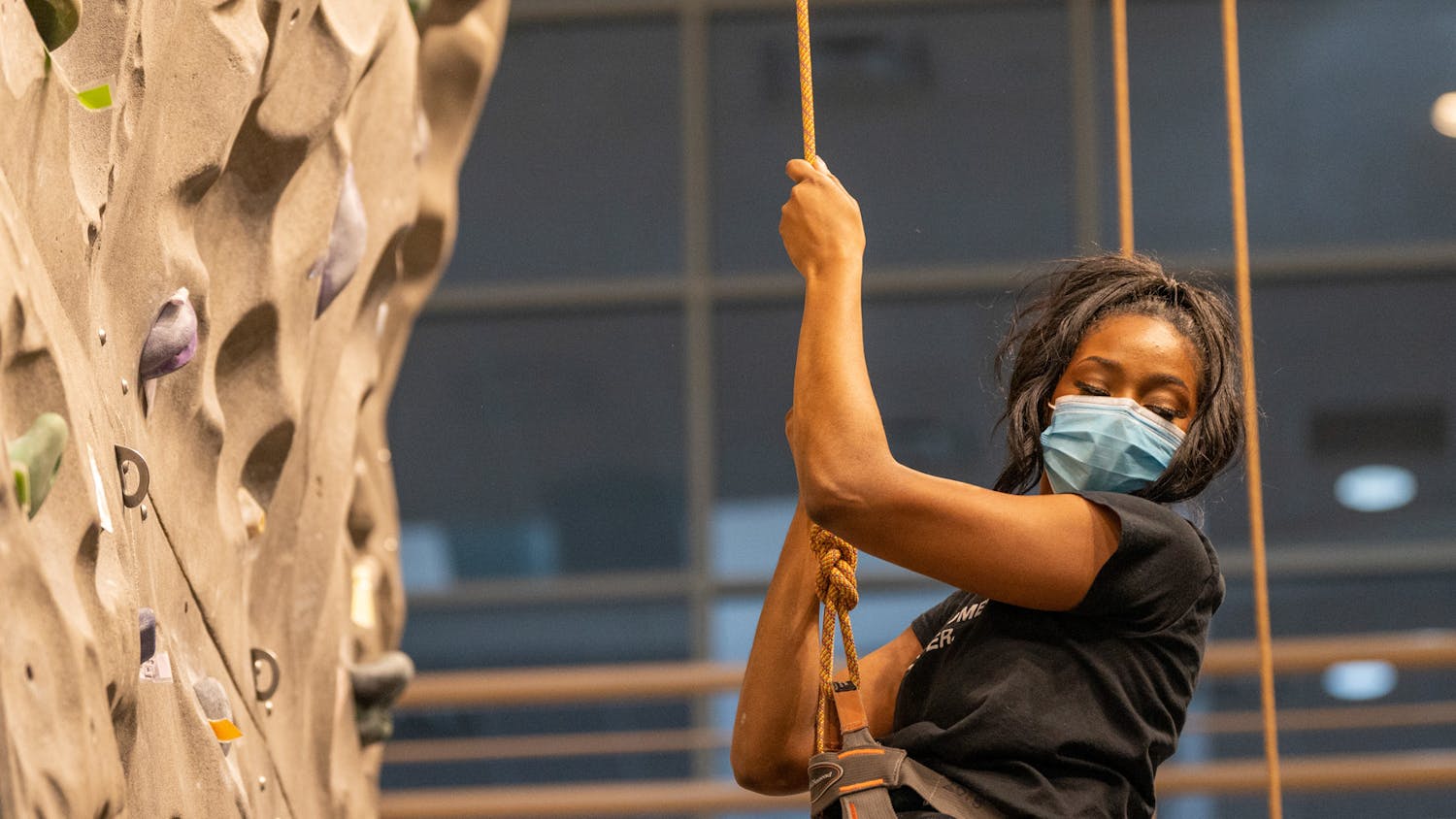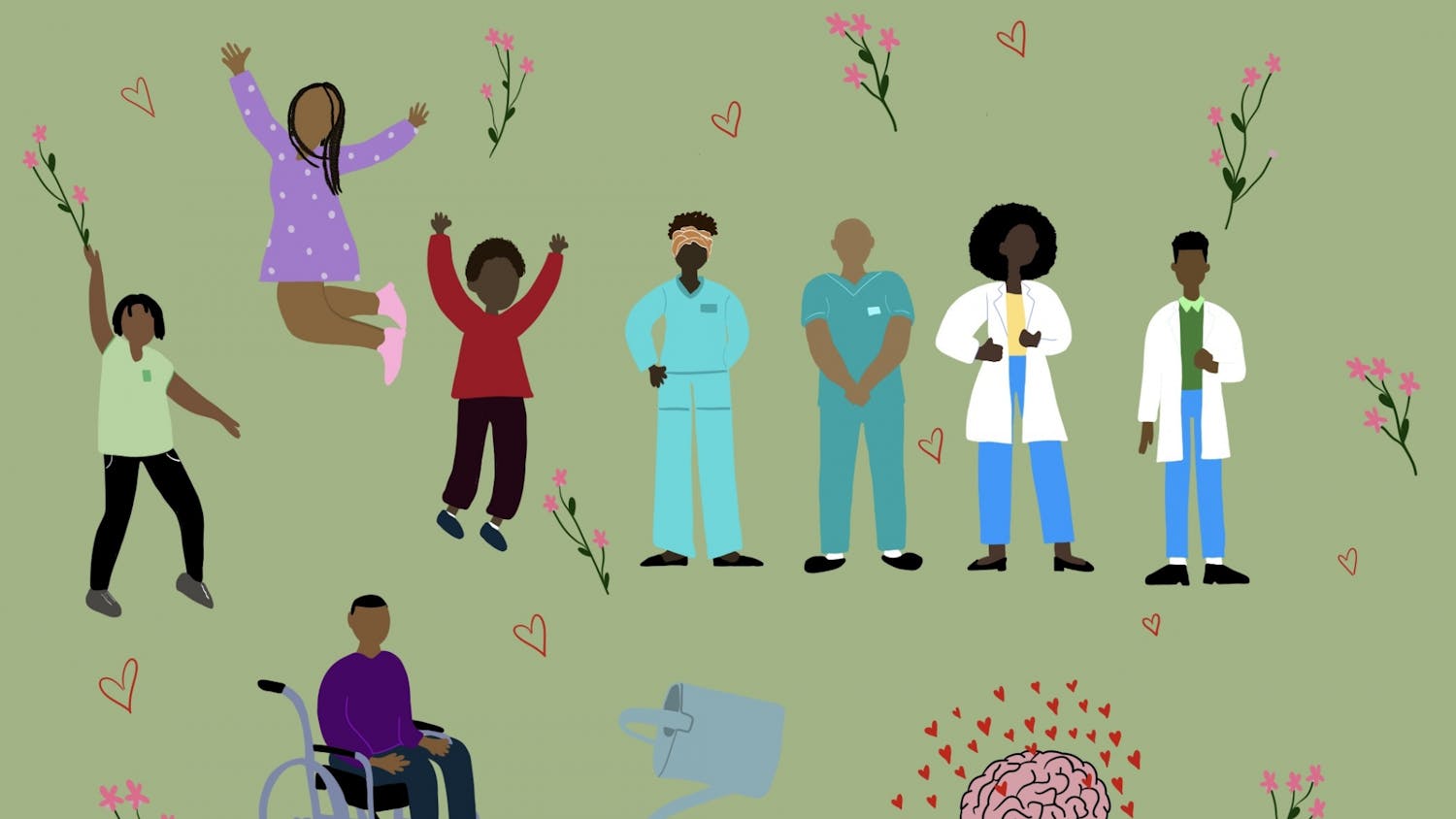Clarification appended.
Lauren Genter was never prompted to think about childbirth growing up; she was an only child. But, all the time Genter spent in the library led her to a book about midwifery.
“I came across this book that portrayed (birth) in such an empowering way,” Genter said. “It was something beautiful.”
When Genter’s friends asked her to be their doula — someone who physically and emotionally supports and comforts pregnant people during labor — she did not have any doula or midwife training. She then took a class and learned some basic comforting tips to be helpful to pregnant people in labor.
Around the same time Genter developed some doula training, she became pregnant with her first child. Right away, she knew she wanted to give birth at home with midwives.
“I happened to grow up walking distance from one of the oldest midwifery practices in our nation,” Genter said. “And I didn’t know that at the time growing up, so I hired them.”
The nonprofit practice Genter hired during her pregnancy is called the Center for Humane Options in Childbirth Experiences, or CHOICE. The nonprofit was established in 1977 to help improve birth outcomes in Central Ohio through individualizing care based on the preferences of pregnant people.
Midwifery, according to the World Health Organization, is “skilled, knowledgeable and compassionate care” for pregnant people, their newborn infants and families throughout pre-pregnancy, pregnancy, birth, postpartum and during the first few weeks after the baby is born.
In 2007, Genter moved to Athens County and reached out to some of the midwives in the area. She started helping them as an assistant at births, which allowed Genter to transition into a student working toward becoming a midwife.
There are different ways to become a midwife in the U.S., and Genter went through the Portfolio Evaluation Process, or PEP. The PEP is organized by the North American Registry of Midwives, or NARM, and NARM issues the Certified Professional Midwife (CPM) credential.
The CPM credential is earned through “training, education and supervised clinical experience, followed by successful completion of a written examination,” according to NARM’s website.
While Genter was studying and training to become a CPM, she noticed midwives in Athens County were not practicing as much as she needed to fulfill the last phase of the PEP. Genter then went back to CHOICE, which took her on as an apprentice. Once Genter finished the PEP and became a CPM, she opened up her own practice in Athens County called Ohio Hills Midwifery, located on 94A Columbus Road.
Some people who do not know what a midwife is, Genter said, get confused when she tells them about her profession. But she simplifies the definition of midwife as someone who uses the midwifery model of care instead of the medical model of care when caring for pregnant people.
Sister Midwifery, a midwifery in Texas, describes the difference between the models. The differences are observed “in terms of responsibility, perspective of pregnancy, definitions of care and the sources of therapies,” according to its website. The medical model intends for the physician to have responsibility for the pregnancy, whereas the midwifery model believes the pregnant person should feel responsible for their pregnancy, as in they have the resources to make decisions.
“So, basically, (midwifery is) individualized care,” Genter said. “It’s for low-risk pregnant people, and we try to use evidence-based information. We also use our own experiences to influence the options that we get differently in families.”
CPMs typically work autonomously and “within a network of relationships with other maternity care professionals who can provide consultation and collaboration when needed,” according to NARM. CPMs are the only ones who, during their PEP, are required to have out-of-hospital midwifery experience.
Another type of midwives are Certified-Nurse Midwives, or CNMs. When Laura Valle started her college career, she was a pre-med student. But she thought about how long medical school is and how much tuition would cost her, so Valle decided to find another way to integrate her passion for medicine into a career. Her grandmother was a labor and delivery nurse, and Valle then switched her major to nursing. However, she never intended to become a labor and delivery nurse.
Valle went through a labor and delivery rotation during nursing school at the University of Oklahoma and met her mentor. Valle recalled her mentor asking her if she would come work in labor and delivery and women’s services as a student nurse.
Valle fell in love with the work she did there. The reason being her observations during physician-led births versus births with midwives. She said she would go into birth rooms with physicians and the atmosphere was chaotic.
“It didn't ever feel like the woman was the center of this birthing experience,” Valle said.
Valle said the experience in a birth space with a midwife looks completely different.
“The focus was on the woman,” Valle said. “The woman could push for hours if she wanted to, and she could be in the tub, she could be standing up, she could be squatting, she could be on hands and knees. And no one was shouting at her to push. I felt safe. I felt that woman was safe. I felt that the woman was supported, and she was being able to have the birth experience that she wanted to have and that the midwife was there solely as a guardian and someone that was there to protect her safety.”
Births like these with a midwife are what inspired Valle to pursue midwifery and become certified. According to the American College of Nurse-Midwives (ACNM), the professional organization that represents two types of midwives, CNMs attend graduate-level midwifery programs and have to pass a certification exam issued by the American Midwifery Certification Board (AMCB). This also applies to Certified Midwives (CMs), who did not become nurses before becoming a midwife but went through the same process to become a midwife.
“CNMs mostly work in hospitals where they see patients in clinic, and then they go to the deliveries with those patients or they staff hospitals as hospitalists where they just manage triage and whoever comes into the hospital to give birth so that the doctors aren’t there 24/7,” Valle said.
Each type of midwife is recognized differently by state, but CNMs are the only midwives authorized to work everywhere in the U.S., according to Midwife Schooling. CMs are only legally recognized in New York, New Jersey, Maine, Rhode Island and Delaware, and 31 states recognize CPMs in some form such as licensure, certification, registration, permit or voluntary registration.
Ohio does not license CPMs or CMs, but a new piece of state legislation could change this: House Bill 496. The bill’s primary sponsor is Rep. J. Kyle Koehler, and Genter said it was created because Rep. Koehler’s daughter wanted a home birth with a licensed midwife. But as they were researching, Rep. Koehler and his daughter could not find any midwives who were licensed by the state.
House Bill 496 states “the governing body of any hospital” should not “discriminate against a qualified person solely on the basis of whether that person is licensed to practice… as a certified midwife or certified professional midwife.”
“That makes it so CPMs can be recognized providers (in Ohio),” Genter said. “And it’s the first step to being able to get insurance reimbursement and Medicaid coverage for clients and legal access to life-saving medications in respective facilities.”
Valle said the bill would also license CPMs under the Ohio Board of Nursing, although CPMs are not nurses, and their practice would still be more limited than CNMs.
“But they would license and regulate the CPMs within the state of Ohio, which would make them legal, and would make them properly vetted and certified and licensed,” Valle said. “Then, they could practice in the future in hospitals.”
Although midwifery has garnered new attention because of House Bill 496, its history is deep, especially in the U.S. “Midwives were among the many enslaved individuals who survived the middle passage and continued to practice and train others as the primary source of birth care throughout the country,” according to The National Museum of African History and Culture.
After the Emancipation Proclamation was passed, African American midwives worked with Black and white pregnant people in the South, according to the National Museum of African History and Culture. Midwives were the best option of care at the time because hospitals were inaccessible in rural areas.
Also, according to the museum, as privatized medicine became more popular by the 1940s, out-of-hospital births went from 100% to 44%. The effect of increased hospital births was high maternal mortality rates, as “general medical practitioners” lacked sufficient education in obstetrics. The museum noted midwives and physicians were asked to create health regulations in the field of obstetrics given the high maternal mortality rates among the states.
The CDC defines maternal mortality as the death of a pregnant person “while pregnant or within 42 days of termination of pregnancy, but excludes those from accidental or incidental causes.” World Population Review reports the U.S. has the highest maternal mortality rate of any developed country, and the U.S. is the only developed country to see maternal mortality rates rise. Ohio has 19.2 deaths per 100,000 births. Generally, the rates are high, but pregnancy has its own risks for different people. “Black women are three times more likely to die from a pregnancy-related cause than white women,” according to the CDC.
“If you look at the (maternal mortality) statistics for Black working families, it’s ridiculous,” Genter said. “It’s really bad. It’s a crisis. So, part of what (Rep. Koehler) is trying to do is increase access to licensed midwifery through Medicaid and through increasing the number of midwives and their access to life-saving ultrasounds and labs and medication.”
A 2021 study conducted by Lancet Global Health reveals how many deaths would be prevented if “coverage of health interventions that can be delivered by professional midwives were scaled up in 88 countries that account for the vast majority of the world’s maternal and neonatal deaths and stillbirths.” The research concluded that if there was universal coverage of midwife-delivered interventions, meaning each citizen of a country has equal access to midwives, 67% of maternal deaths, 64% of neonatal deaths and 65% of stillbirths would be prevented by 2035, and 4.3 million lives would be saved annually by 2035.
While midwives can reduce the high maternal mortality rates, they can also provide other holistic health services, especially CNMs. Valle is opening up her own practice called Willow Women’s Health which will focus on perimenopause, menopause, gynecologic, contraception, preconception and women’s health care. Willow Women’s Health is in Kettering, Ohio, and will be opening March 14.
“When you become a midwife or nurse-midwife, there’s just a wide breadth of things that you can do,” Valle said.
Midwives provide pregnant people with choices. They are focused on the pregnant people they are assisting and how they view the birth as special.
“It wasn’t something that was happening to these women,” Genter said. “It was something that they were doing.”
Clarification: A previous version of this article stated that Valle said the ACNM supports House Bill 496, but she misspoke. This article has been updated to reflect the most accurate information.






